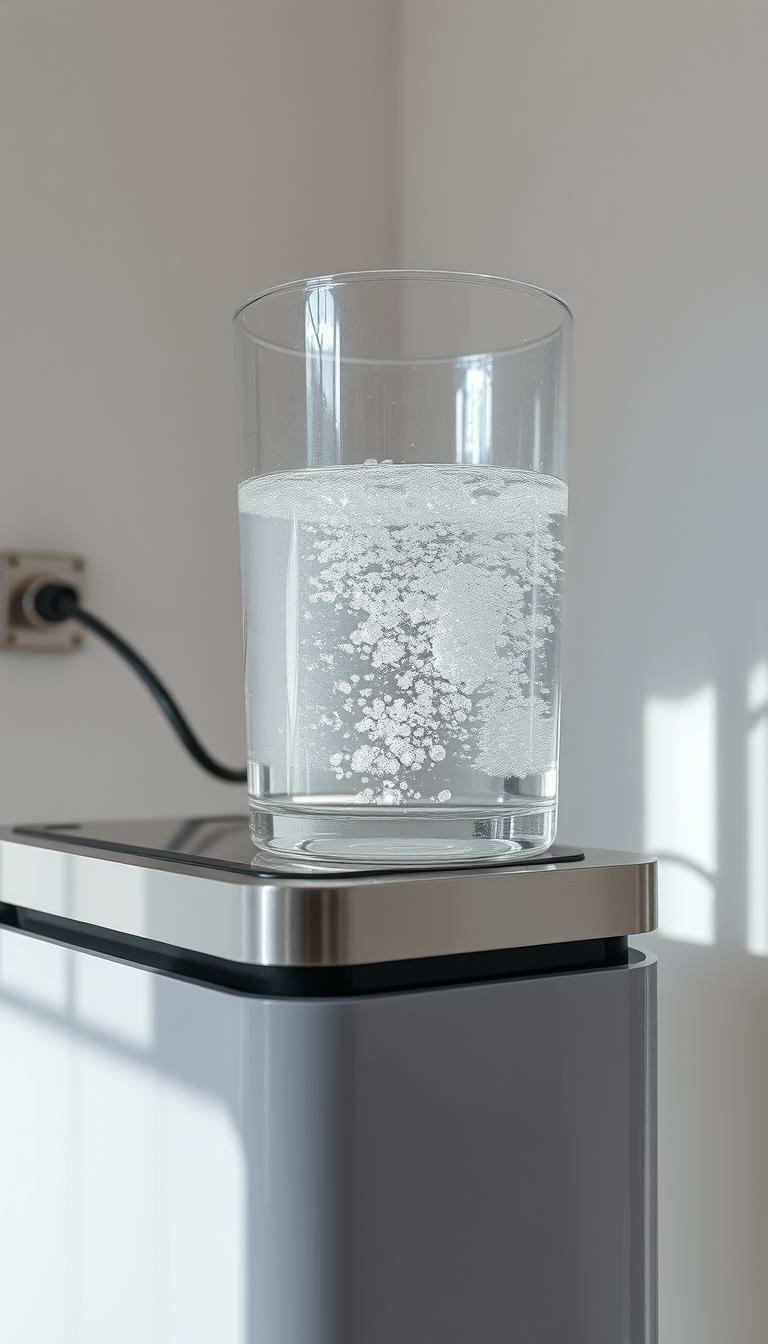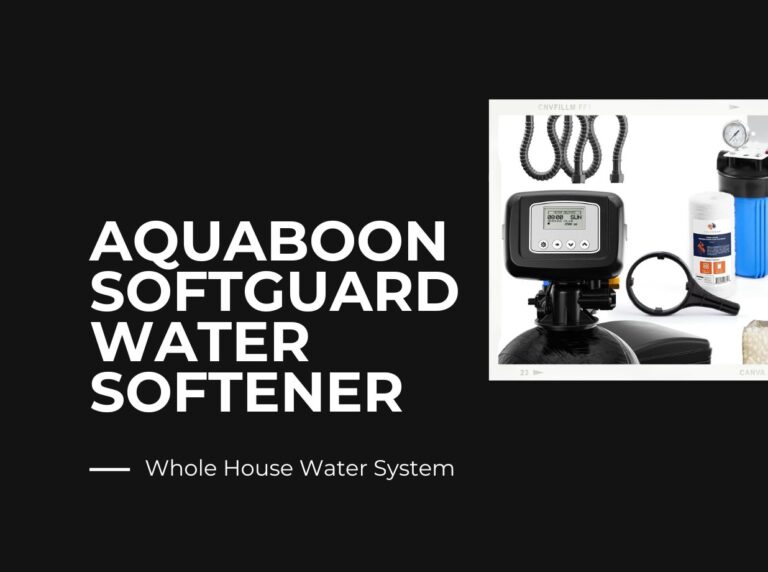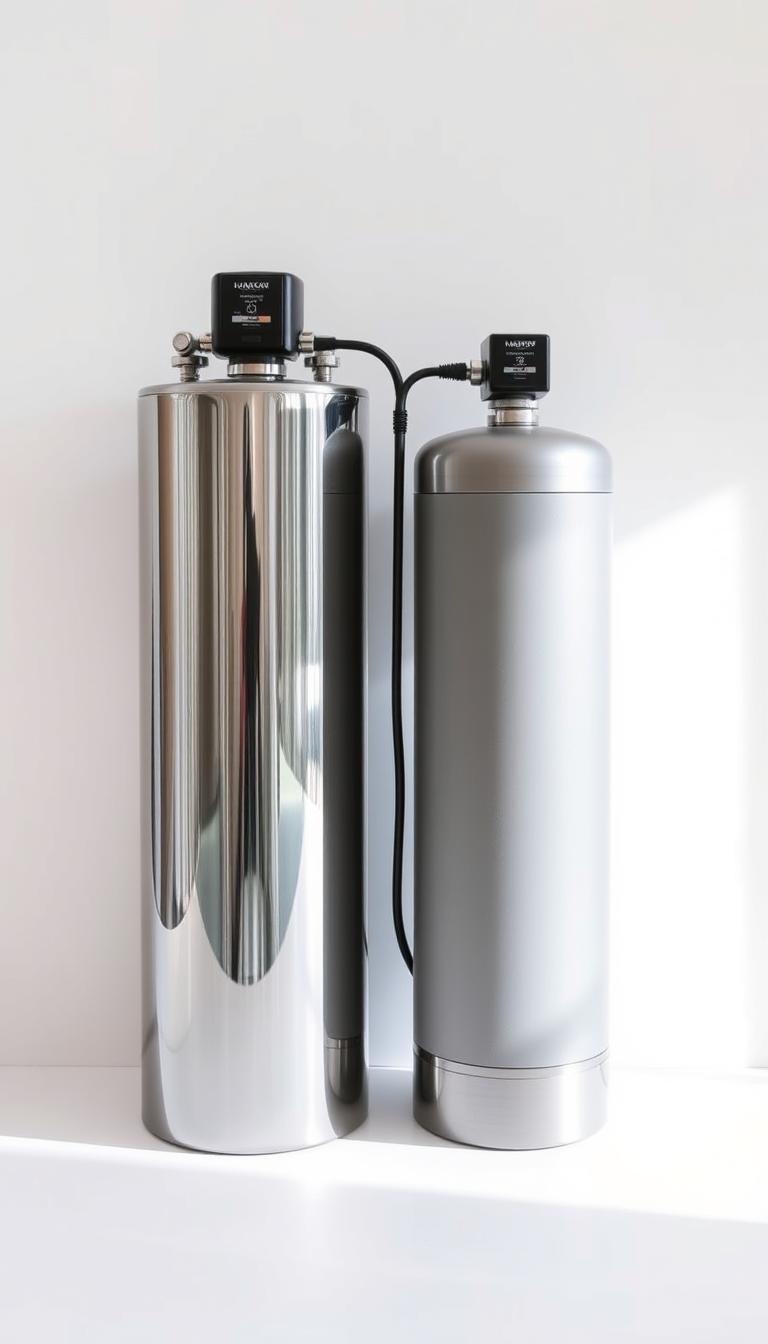Dual-Tank Home Water Softeners Explained
Are you tired of dealing with hard water that damages your appliances and affects your skin? Imagine having a continuous supply of softened water for your household needs.
A dual-tank home water softener is designed to provide just that. Unlike traditional single-tank systems, it features two resin tanks, ensuring you never run out of soft water, even during regeneration. This system is particularly beneficial for larger households or areas with extremely hard water.
For those considering installing a dual-tank water softener, it’s essential to understand the costs involved. According to information on the true cost of installing a home water, dual-tank systems can range from $1,500 to $3,500 on average, with a lifespan of 15-20 years and low maintenance costs.
Key Takeaways
- Dual-tank home water softeners provide a continuous supply of softened water.
- They are ideal for larger households or areas with extremely hard water.
- The average cost of a dual-tank system ranges from $1,500 to $3,500.
- These systems have a lifespan of 15-20 years.
- Maintenance costs for dual-tank systems are considered low.
Understanding Hard Water Problems in American Homes
Many households across America face challenges due to hard water, affecting daily life. Hard water contains high levels of minerals such as calcium and magnesium, which can cause a variety of issues.
Common Hard Water Issues in U.S. Regions
Hard water is a widespread problem across the United States, with certain regions being more affected than others. The issues caused by hard water include scale buildup in pipes and appliances, poor soap performance, and higher maintenance costs.
The Impact of Hard Water on Plumbing and Appliances
Hard water can significantly impact plumbing and appliances by causing scale buildup, which can lead to reduced water flow, increased energy consumption, and premature wear on appliances.
| Impact | Description | Consequences |
|---|---|---|
| Scale Buildup | Mineral deposits in pipes and appliances | Reduced water flow, increased energy consumption |
| Appliance Wear | Premature wear due to mineral buildup | Shortened appliance lifespan, higher maintenance costs |
Health and Aesthetic Concerns with Hard Water
Hard water can also have health and aesthetic implications, including dry skin and hair, and affecting the taste of water. While hard water is not typically considered a health risk, it can cause discomfort and affect the overall quality of water.
What Is a Dual-Tank Home Water Softener?
A dual-tank water softener is an advanced system designed to provide a continuous supply of soft water, making it an ideal solution for households struggling with hard water issues.
Basic Definition and Core Components
A dual-tank home water softener is essentially a water treatment system that utilizes two tanks to ensure a constant supply of softened water. The core components include resin beads, a brine tank, and a control valve. The resin beads are responsible for attracting and holding onto hard minerals like calcium and magnesium through a process known as ion exchange.
| Component | Function |
|---|---|
| Resin Beads | Attract and hold onto hard minerals |
| Brine Tank | Holds salt or potassium used for regeneration |
| Control Valve | Manages the flow of water and regeneration cycle |
How Dual-Tank Systems Differ from Traditional Softeners
Unlike single-tank water softeners, dual-tank systems have two resin tanks that work alternately, ensuring a continuous supply of soft water. While one tank is in use, the other is regenerating, thus eliminating the downtime associated with traditional softeners.
The Science Behind Water Softening Technology
The science behind water softening technology lies in the ion exchange process. Resin beads in the tank attract and hold onto calcium and magnesium ions, exchanging them for sodium or potassium ions. This process effectively softens the water, making it more suitable for household use.
By understanding the basics of a dual-tank home water softener and its core components, homeowners can make informed decisions about their water treatment needs.
How Dual-Tank Water Softeners Work
The operation of dual-tank water softeners is based on a simple yet effective principle: alternating between two tanks to provide a continuous soft water supply. This functionality is crucial for households that cannot afford interruptions in their water supply.
The Ion Exchange Process Explained
Dual-tank water softeners utilize the ion exchange process to remove calcium and magnesium ions from hard water, replacing them with sodium or potassium ions. This process occurs within the resin tanks, where the resin beads attract and hold onto the calcium and magnesium ions, effectively softening the water.
Understanding the Regeneration Cycle
The regeneration cycle is a critical component of dual-tank water softeners. While one tank is in service, softening water, the other tank undergoes regeneration. During regeneration, the resin beads are flushed with a brine solution to remove the accumulated calcium and magnesium ions, replenishing the resin’s softening capacity.
Continuous Soft Water Supply Mechanism
The continuous soft water supply mechanism is achieved by alternating between the two tanks. As one tank becomes saturated with hard minerals, the system switches to the other tank, which has been regenerating. This ensures that soft water is always available, without interruption.
Smart Features in Modern Dual-Tank Systems
Modern dual-tank water softeners often come equipped with smart features, such as advanced sensors that monitor water usage and automatically initiate regeneration cycles when necessary. These smart features enhance efficiency, reduce waste, and provide users with real-time data on their water softener’s performance.
| Feature | Benefit | Impact |
|---|---|---|
| Ion Exchange Process | Effective water softening | Reduces scale buildup in pipes and appliances |
| Regeneration Cycle | Maintains resin efficiency | Ensures continuous soft water supply |
| Smart Sensors | Optimizes regeneration | Reduces salt and water consumption |
By understanding how dual-tank water softeners work, homeowners can appreciate the complexity and benefits of these systems. From the ion exchange process to smart features, dual-tank water softeners offer a comprehensive solution to hard water problems.
Dual-Tank vs. Single-Tank Water Softeners: A Comprehensive Comparison
Dual-tank and single-tank water softeners are two distinct solutions for addressing hard water issues in American homes. While both types of systems aim to reduce water hardness, they differ significantly in their approach, efficiency, and overall performance.
Performance and Efficiency Differences
One of the primary differences between dual-tank and single-tank water softeners lies in their performance and efficiency. Dual-tank systems provide a continuous supply of soft water, as one tank is always in operation while the other regenerates. In contrast, single-tank systems can leave households without soft water during the regeneration cycle.
Dual-tank systems are more efficient in terms of water and salt usage, as they can be programmed to regenerate based on actual water usage rather than a predetermined schedule.
Water and Salt Usage Comparison
When it comes to water and salt usage, dual-tank systems generally have an advantage over single-tank systems. The counter-current regeneration process in dual-tank systems reduces salt consumption and minimizes waste.
Maintenance Requirements and Frequency
Maintenance is another critical aspect where dual-tank and single-tank water softeners differ. Dual-tank systems typically require less maintenance due to their ability to regenerate one tank while the other is in use, reducing the strain on the system.
Lifespan and Durability Factors
The lifespan and durability of water softeners are influenced by several factors, including the quality of the system, usage patterns, and maintenance practices. Generally, dual-tank systems are known for their durability and longer lifespan compared to single-tank systems.
| Feature | Dual-Tank Water Softener | Single-Tank Water Softener |
|---|---|---|
| Continuous Soft Water Supply | Yes | No |
| Water and Salt Efficiency | High | Moderate |
| Maintenance Frequency | Low | Moderate |
| Average Lifespan | 15-20 years | 10-15 years |
Key Benefits of Dual-Tank Water Softeners for American Households
Dual-tank water softeners offer numerous benefits for American households, revolutionizing the way we experience soft water at home. These systems provide a comprehensive solution to the challenges posed by hard water, enhancing the overall quality of life for homeowners.
Uninterrupted Soft Water Supply 24/7
One of the primary advantages of dual-tank water softeners is their ability to provide an uninterrupted soft water supply. Unlike single-tank systems, dual-tank softeners can regenerate while still supplying soft water, ensuring that households never run out of soft water. As noted by experts, “A dual-tank system is like having a backup plan, ensuring you always have access to soft water, even during regeneration cycles.” This continuous supply is a significant for large households or homes with high water demands.
Improved Water and Energy Efficiency
Dual-tank water softeners are designed to be more water and energy efficient than their single-tank counterparts. By optimizing the regeneration process and minimizing water waste, these systems help households reduce their environmental footprint while also lowering their utility bills.
Extended Appliance and Plumbing Lifespan
The use of dual-tank water softeners can significantly extend the lifespan of appliances and plumbing by reducing the damaging effects of hard water scale buildup. This not only saves homeowners money on premature replacements but also reduces the inconvenience associated with appliance failures.
Lower Long-Term Maintenance Costs
While the initial investment in a dual-tank water softener may be higher, the long-term maintenance costs are typically lower. With fewer regenerations required and a reduced risk of system failure, households can enjoy the benefits of soft water without the associated high maintenance costs.
In conclusion, the benefits of dual-tank water softeners make them an attractive option for American households seeking to improve their water quality and reduce their maintenance costs.
Top Rated Dual-Tank Water Softeners on the Market
For homeowners seeking the best dual-tank water softeners, several top-rated models stand out for their performance and reliability. The market offers a range of options catering to different household sizes and budgets.

Premium Performance Models for Large Households
For larger households, premium dual-tank water softeners are designed to provide high efficiency and advanced features. Models like the Ecomax Duo Twin-Tank Water Softener offer superior performance, handling high water demands while maintaining optimal softening capabilities.
These premium models often come with advanced features such as smart technology, allowing for real-time monitoring and adjustments to ensure the water softening process is always optimized.
Mid-Range Options with Best Value for Average Homes
Mid-range dual-tank water softeners strike a balance between performance and affordability, making them suitable for average-sized homes. They offer reliable softening capabilities and often include features like metered regeneration and digital controls.
These models are designed to be efficient, using just the right amount of salt and water to regenerate, thus saving on operational costs.
Budget-Friendly Dual-Tank Systems
For those on a tighter budget, there are still effective dual-tank water softener options available. These budget-friendly models may not have all the bells and whistles of their premium counterparts but still deliver on the core promise of softening water.
They are a great entry-point for homeowners looking to benefit from dual-tank technology without a significant upfront investment.
Customer Satisfaction and Review Analysis
Customer reviews and satisfaction ratings provide valuable insights into the real-world performance of dual-tank water softeners. By analyzing these reviews, potential buyers can get a sense of the strengths and weaknesses of different models.
Many top-rated models boast high customer satisfaction rates, often praising their efficiency, ease of use, and the significant improvement they bring to water quality.
Installation Considerations for Dual-Tank Water Softeners
Before installing a dual-tank water softener, it’s essential to understand the various considerations involved, from space and plumbing modifications to the choice between DIY and professional installation.
Space Requirements and Optimal Placement
Dual-tank water softeners require more space than their single-tank counterparts. It’s crucial to measure the area where you plan to install the unit to ensure it fits comfortably. Consider the height, width, and depth, as well as additional space needed for maintenance and salt replenishment.
Optimal placement is typically near the water supply line entering your home, often in a basement or utility room. Ensure the area is well-ventilated and accessible for regular maintenance.
DIY vs. Professional Installation: What to Know
Deciding between DIY and professional installation depends on your plumbing knowledge, experience, and local regulations. DIY installation can save on labor costs but may require more time and potentially lead to mistakes if not done correctly.
- DIY installation is suitable for those with plumbing experience and the right tools.
- Professional installation ensures the job is done correctly and may be required by local codes or manufacturers’ warranties.
Common Installation Challenges and Solutions
Common challenges include dealing with old or corroded plumbing, ensuring proper drainage, and complying with local plumbing codes. Solutions involve assessing your plumbing system before installation, using appropriate adapters, and consulting local professionals if necessary.
Necessary Plumbing Modifications and Permits
Plumbing modifications may be necessary to accommodate the dual-tank system, such as resizing pipes or adding additional drainage. It’s also important to check if any permits are required for the installation, as regulations vary by location.
| Installation Aspect | Considerations |
|---|---|
| Space Requirements | Measure area, consider height, width, depth, and additional space for maintenance |
| DIY vs. Professional | Assess plumbing knowledge, consider local regulations and warranty requirements |
| Plumbing Modifications | Check for old or corroded pipes, ensure proper drainage, comply with local codes |
Cost Analysis: Is a Dual-Tank Water Softener Worth the Investment?
To determine whether a dual-tank water softener is a worthwhile investment, a comprehensive cost analysis is necessary. This involves examining not only the initial purchase and installation expenses but also the ongoing operational and maintenance costs, as well as the potential long-term savings.
Initial Purchase and Installation Expenses
The upfront cost of a dual-tank water softener is typically higher than that of a single-tank system. The purchase price can range from $800 to $2,000, depending on the brand, model, and features. Installation costs can add another $200 to $500, depending on the complexity of the installation and local labor rates.
Ongoing Operational and Maintenance Costs
Dual-tank water softeners require regular maintenance to ensure optimal performance. This includes salt replenishment, cleaning, and occasional part replacements. The cost of salt can vary depending on the type and quantity used, but on average, households can expect to spend around $50 to $100 per year on salt.
Maintenance Cost Comparison
| Maintenance Task | Frequency | Estimated Annual Cost |
|---|---|---|
| Salt Replenishment | Every 1-3 months | $50-$100 |
| System Cleaning | Every 6-12 months | $20-$50 |
| Part Replacements | As needed | $50-$100 |
Long-Term Savings on Appliances, Plumbing, and Utilities
While dual-tank water softeners have higher upfront costs, they offer significant long-term savings. By reducing scale buildup, these systems can extend the lifespan of appliances and plumbing, potentially saving homeowners hundreds of dollars in repair and replacement costs. Additionally, soft water can improve the efficiency of water heaters and other appliances, leading to lower utility bills.
Return on Investment Timeline for Different Household Types
The return on investment (ROI) for a dual-tank water softener varies depending on household size, water usage, and local water conditions. For larger households with high water demand, the ROI can be as short as 2-3 years due to the significant savings on appliance maintenance and utility bills. For smaller households, the ROI may be longer, typically ranging from 5 to 7 years.
In conclusion, while the initial investment in a dual-tank water softener is higher, the long-term savings and benefits can make it a worthwhile investment for many households.
Conclusion: Making the Right Choice for Your Home’s Water Quality
Choosing the right water softener depends on several factors, including household size, water usage, and specific needs. As discussed, dual-tank home water softeners offer numerous benefits, including uninterrupted soft water supply, improved efficiency, and extended appliance lifespan.
When making the right choice for your home’s water quality, consider your household’s unique requirements. Assess your water usage patterns, the size of your household, and any specific water quality issues you’re addressing. By doing so, you can select a dual-tank water softener that meets your needs, enhancing your overall water quality and household efficiency.
Investing in a dual-tank water softener is a step towards a healthier, more efficient home. With the information provided, you’re now equipped to make an informed decision that suits your household’s needs, ultimately improving your home’s water quality.
Frequently Asked Questions
What is a dual-tank home water softener?
A dual-tank home water softener is a type of water softening system that uses two tanks to provide a continuous supply of soft water. One tank is always in use while the other regenerates, ensuring that soft water is always available.
How does a dual-tank water softener differ from a single-tank system?
The primary difference between a dual-tank and a single-tank water softener is the ability of the dual-tank system to provide a continuous supply of soft water. Single-tank systems require a regeneration cycle, during which no soft water is available.
What are the benefits of using a dual-tank water softener?
The benefits of using a dual-tank water softener include an uninterrupted supply of soft water, improved efficiency, extended lifespan of appliances and plumbing, and lower long-term maintenance costs.
How do I choose the best dual-tank water softener for my home?
To choose the best dual-tank water softener, consider factors such as household size, water usage, and the level of water hardness. It’s also essential to research different models, read customer reviews, and compare features and prices.
What is the cost of installing a dual-tank water softener?
The cost of installing a dual-tank water softener varies depending on factors such as the model, installation complexity, and location. On average, the initial purchase and installation expenses can range from $1,000 to $3,000.
Are dual-tank water softeners more efficient than single-tank systems?
Dual-tank water softeners are generally more efficient than single-tank systems because they can optimize salt and water usage during the regeneration cycle. However, efficiency can vary depending on the specific model and usage patterns.
Can I install a dual-tank water softener myself?
While it’s possible to install a dual-tank water softener yourself, it’s recommended to hire a professional to ensure a proper and safe installation. DIY installation can be challenging, especially for those without plumbing experience.
How often do dual-tank water softeners require maintenance?
Dual-tank water softeners typically require less maintenance than single-tank systems. However, regular checks and maintenance are still necessary to ensure optimal performance, including salt level checks and cleaning the brine tank.
What is the lifespan of a dual-tank water softener?
The lifespan of a dual-tank water softener can vary depending on factors such as usage, maintenance, and quality of the system. On average, a well-maintained dual-tank water softener can last between 10 to 20 years.
Do dual-tank water softeners waste a lot of water during regeneration?
Modern dual-tank water softeners are designed to be more water-efficient during regeneration. While some water is used during regeneration, many models have features that minimize water waste.
Can a dual-tank water softener be used with a septic system?
Yes, dual-tank water softeners can be used with septic systems. However, it’s essential to choose a model that is compatible with septic systems and to follow the manufacturer’s guidelines for installation and maintenance.







